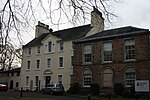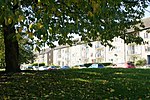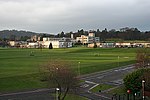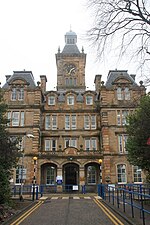Craigleith railway station
1879 establishments in Scotland1962 disestablishments in ScotlandDisused railway stations in EdinburghEdinburgh stubsFormer Caledonian Railway stations ... and 5 more
Pages with no open date in Infobox stationRailway stations in Great Britain closed in 1962Railway stations in Great Britain opened in 1879Scotland railway station stubsUse British English from May 2020

Craigleith railway station served the area of Craigleith, Edinburgh, Scotland from 1879 to 1962 on the Leith Branch and the Barnton Branch.
Excerpt from the Wikipedia article Craigleith railway station (License: CC BY-SA 3.0, Authors, Images).Craigleith railway station
Roseburn Path, City of Edinburgh Comely Bank
Geographical coordinates (GPS) Address External links Nearby Places Show on map
Geographical coordinates (GPS)
| Latitude | Longitude |
|---|---|
| N 55.9562 ° | E -3.2441 ° |
Address
Craigleith
Roseburn Path
EH4 3HL City of Edinburgh, Comely Bank
Scotland, United Kingdom
Open on Google Maps








